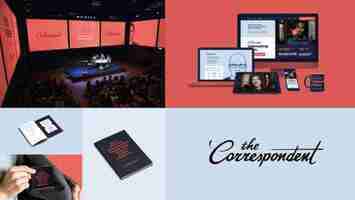‘Agile metrics’ are the key to your team’s continuous improvement
Continuous improvement is a vital aspect of an efficient organization .

To create a truly great product , a team must repeat what works well and improve what doesn’t — and that same thought process should be used by other teams within the organization .
While this concept may seem obvious, too often teams fail to optimize for or measure efficiency .
The reason? They simply don’t realize how important measurement is. What a team accomplishes in its day-to-day tasks has a direct impact on the success of the product .
If you fear your teams are on the verge of (or you’re already stuck in) an efficiency plateau, you can mitigate the problem by determining the agile metrics you should measure. Simply put, agile metrics are data points that demonstrate how a team is performing in their various organizational roles, whether it’s business , product , engineering, or support.
By taking the time to measure your organization ‘s agile metrics , your teams can set clear expectations, which will enable you to produce more work with fewer defects.
Why agile metrics matter
In the era of digital transformation when it seems as if companies are implementing new systems and technologies all the time, there’ s a tendency to cling tightly to the past . While tradition should be respected in many situations, holding on to inefficient and immeasurable processes can put an entire organization at risk of failing.
Your organization can often avoid this issue by creating a system to measure agile metrics that offers teams valuable insights into their performance , which will allow teams to be able to work toward continuously improving their output. This continuous improvement not only encourages teams to practice good habits and proper communication as a whole, but it promotes an environment of open dialogue , feedback , and fresh ideas so everyone can continue moving forward.
But while tools are important, they alone are not enough to improve your teams . After all, the metrics you gather are simply a reflection of how well a team works. Your teams will need an agile coach to help interpret the metric values and take the appropriate action . An example of a methodology that supports this is the Kanban Maturity Model .
As a digital commerce consulting firm , one of our core services is agile planning. Around a year and a half ago, we created a continuous improvement dashboard for a client that was integrated with their project management system . What started out as just a small side project grew into a tool that is used in monthly meetings with the Chief Innovation Officer.
Today, every agile team uses the dashboard to discuss their areas of improvement on a regular cadence. The dashboard also allows for a story to be told from week to week that helps the agile teams answer questions that arise. Additionally, the teams have begun Kanban Maturity Model sessions with their assigned agile coach to improve their metrics as well as their overall process.
Agile metrics matter because they can bring your organization together. By taking the time and measures to improve, your teams can move past the days of bad habits like micromanagement and a lack of focus and work to achieve balance across the entire organization .
Know which metrics to measure
Once you’ve established the need for continuous improvement, now it’s time to define the metrics you’ll need to measure. While there are separate, industry -accepted metrics to track across the business , product , engineering, and support teams, they all affect one another.
For example, if story throughput (an engineering metric) is low, then we can likely tell a two-part story:
The product team made stories either too big or with too little detail.
There was no epic refinement with product and engineering after writing the stories before engineering started working on them.
A team’s agile metrics will vary depending on the business , industry , and agile methodology it employs, but there are few common metrics we recommend our clients measure, such as lead time, cycle time, and throughput.
With that, be mindful as your organization starts to implement metrics . It’s not a race to game the system to increase the numbers. Rather, the metrics are just a representation of how the teams are performing as a whole.
Show your work
When your teams first begin measuring agi le metrics and working to improve internally, the entire process might seem a little overwhelming.
To overcome this dilemma, I would suggest carefully planning the first few metrics you want to measure and presenting them on a continuous improvement dashboard.
In my experience , our clients welcome the opportunity to measure their performance because it helps them understand one of the most difficult aspects of product : estimation.
For many teams , the most difficult question to answer accurately is, “How long will this feature take to build?” This is one area where an agile dashboard is incredibly effective.
For example, if over the past four weeks an epic took 12 days on average to complete for a given team , they can expect that another epic will take the same amount of time — with some tolerance factored in, of course .
Your teams should also ensure that their agile project management systems will support either pushing that data to another source or have another application pull the data .
The data would then have calculations run against it to allow summarized visualizations to be shown at each level of the business and to track changes over time.
Each metric should touch on these three items:
Direction. Determine which direction is “good”— up or down.
Goal. Know the threshold each team is trying to stay within.
Benchmark. The way we measure our benchmark is by looking at a metric>’s value for the most recent five weeks and then checking if the most recent value is inside or outside one standard deviation of that. This allows us to know whether we are normalizing, improving, or worsening.
To encourage your teams to communicate as they begin measuring efficiency, hold monthly meetings with your leadership and at least one key member from each team.
For instance, someone from the business side should be able to speak to high-level achievements related to the roadmap, the product representative should speak to features, and an engineering/support representative should speak to day-to-day activities.
I’d recommend that each person take no more than 10 minutes to speak; the important thing is to tell a story and not focus on individual numbers.
By bringing everyone in the organization together, your team members can have an open discussion about how they are performing and use the time to set expectations on how they can improve their output.
Improvement is an ongoing process
While putting together a plan for continuous improvement is within your organization’s reach, it’s important to understand that change doesn’t happen overnight.
The road to continuous improvement could be months or even years-long, and even then, the journey is never really over.
As you and your teams continuously measure your agile metrics, revisit them regularly and use them as talking points for conversations about how to achieve your goals together as an organization.
Forget ‘users’ and focus on the 7 steps to make your organization ‘memberful’
With the birth of the world wide web came digital design and the introduction of the phrase “user experience.” It would mean many things to many people but broadly it’s used to describe what someone learns, sees, and feels when interacting with web content.

As a digital designer, I have become obsessed with this user experience: how individuals connect with organizations online, but also in the real world, and how the nature of this experience — this relationship — is often key to an organization’s sustainability.
The relationship between you and your customers acquires real depth in the business model of memberships, where the user doesn’t only value the product, but also believes in the cause and supports it in ways beyond giving money. Unlike “users,” members stay with you far beyond the lifecycle of a normal user experience, so it pays off to obsess over the “member experience.”
Let me explain the difference between users and members, and the seven steps your organization can take to become more “memberful.”
The best route to a sustainable organization
At Momkai , the strategic design agency that I founded 18 years ago, my team and I have helped founders and changemakers to transform their branding, digital products, and launch events.
Through our projects, especially in our recent collaboration with New York University and professor Jay Rosen’s Membership Puzzle Project , we’ve learned that it’s “memberful” initiatives which lead to the richest user experiences, and provide the best route to sustainability for organizations in our constantly changing world.
If you embrace the success of the membership model you can follow the route of media companies like The Guardian or startups like ad-free journalism platform The Correspondent to build a loyal base of engaged members that contribute time, network, and knowledge in pursuit of your shared purpose.
The difference between users and members
Designing great user experiences has always been at the heart of my work and Momkai’s, but the word “user” — reminding me of Silicon Valley’s darker side, and putting growth above all else — has come to feel increasingly inappropriate for what I want to achieve.
Instead, the word “member” feels right for the type of projects we support. The Membership Puzzle Project says being a member is a type of “social contract” where your relationship with an organization goes beyond the transactional.
Sure, you might give money to that organization or cause, but you also stand behind its mission based on shared values, and become a part of the community that surrounds it.
Therefore, members serve as a constant reminder for organizations to work according to the missions that they’ve laid out. A two-way relationship like that calls for new brands and platforms that focus on delivering a meaningful membership experience.


This isn’t just a theory or a load of buzzwords: my team has already excelled helping clients from around the globe with memberful initiatives.
We’ve helped The Correspondent build a member community in over 130 countries from scratch ; united the 1.2 million members that make up the Royal Dutch Football Association; empowered scientific communities throughout Europe with new initiatives for the Embassy of Good Science and Imperial College London; developed memberful strategies in the US for the world’s largest network of responsible land use experts, ULI, and helped to launch Tokyo-based journalism startup Renews this summer.
Now this isn’t just meant to toot my own horn, all these initiatives show the value you can obtain when you start focusing on members rather than users.
Credit: Momkai The member platforms and experiences we design are guided by my philosophy of cultivating calm . Since members are your strongest supporters, they are willing to grant their attention to you, as long as you don’t abuse it. As Jay Rosen explains on The Daily Show , this approach is the opposite of an attention-grabbing ethic. Attention is not being sold to a third party, as would be the case with an advertising model.
Therefore, we can be fully focused on creating online spaces of calm — so that only the content can drive your members to distraction.
So how do you know if your organization can be memberful?
Meaningful memberships are built on the following repeat principle: locate your strongest supporters and learn how to appeal to them for support. That means that in order to become memberful, you need to have a loyal following in the first place, no matter how big or small. This usually means repeat visitors, not traffic (as explained in NYU’s guide ).
Once you meet that first requirement, our experience tells us there are seven elements to a meaningful member experience:
1. Members understand your mission
Those interacting with your organization feel a strong sense of shared responsibility, common purpose, or common values. What does your organization stand for and believe in? How is this communicated? Are members able to clearly connect with your cause.
2. Members receive benefits they actually want
Memberful initiatives clearly communicate what people receive in return for their “gift,” whether that gift is their money, time, or knowledge. If I give money, what do I get access to and how often? If I share knowledge, where does this live, who has access to it, and how can it be shared? If I spend time connecting with the community, who will I meet, what network will I build?
3. Members see people at the center of your organization
Your initiative has a human face. Can members clearly see the people behind the project? Are they able to engage with others in their member community?
4. Members receive a calm, cohesive experience
Memberful initiatives use a human-centered design approach. Do you have an interface that cultivates calm? Does its look and feel exude simplicity and aesthetic elegance? Is there a human touch that invites engagement?
5. Members have a seat at the table
The relationship with your members is never top-down. Members’ input is valued and there are clear pathways for them to contribute to and participate in your work. This collective knowledge sharing is a key reason to join the community. How can you invite members to share their valuable knowledge? What platforms would help them to contribute easily and effectively?
6. Members are empowered to become ambassadors
Every new member you have should be viewed as a possible ambassador. Members are supported to share your mission within their own communities, telling your story and acting as ambassadors for your work in the wider world. How can you empower your members to advocate for your cause?
7. Members gain useful insights in story form
Stories are the natural way to process information and emotions in full color, allowing your community to connect with a message more deeply. Do the stories you tell your members contain helpful, practical, and actionable insights? Will they help your members make informed decisions?
Here’s what a ‘startup nation’ is — and why governments are desperate to create them
Did you know we have an online event about the future of work coming up? Join the Future of Work track at TNW2020 to hear how successful companies are adapting to a new way of working.

Today, becoming a “startup nation” is a public policy objective in virtually every country in the world, be it Morocco, Bangladesh, Mexico, or Peru. They are all rushing to follow the nations that have led the way – the United States, China, South Korea, Israel, Canada.
France got off to a laborious start in the early 2000s, but has recently reactivated this goal. On October 10, 2018, President Emmanuel Macron addressed an audience of digital entrepreneurs at Station F, which calls itself the “biggest startup campus in the world,” and announced an ambitious roadmap to assist and promote entrepreneurs in France.
Everywhere, institutional pressure to transform young people into entrepreneurs is becoming an obsession. It’s a symptom, but of what? Can it not be seen as a sign of panic among politicians contemplating the shortage of prospects to offer young people?
A cascade of service providers
Let’s try to interpret this strange new command: “Become entrepreneurs!” It seems to suggest that established institutions only open up two avenues for the younger generation: opt for indigence with some degree of welfare assistance (e.g. a basic living stipend) or take a gamble. If so, then encouragement to create startups may be seen as the public face of a very discreet strategy on the part of large state and capitalistic organizations intent on sweeping this social issue under the carpet.
To an increasing extent, these same organizations are subcontracting, outsourcing, automating, robotizing, and digitizing to reduce the cost of labor as a percentage of total operating expenditure. They look for “talent,” i a small minority of high-value added employees, while systematically avoiding the employment of workers deemed interchangeable, leaving them to the hard law of the market and progressively transforming them into service providers; into the providers of other providers; into the providers of providers of providers; and so forth.
A new wave of utopias
What’s going to happen to university graduates? Whether they major in physical education, humanities, communication, and journalism, marketing, or human resources, they all dream of finding jobs that will bring them self-fulfillment and even enjoyment. In France, they also expect five weeks of annual paid vacation and time off in lieu of overtime pay under the “RTT” scheme.
In the 1970s, young university-goers saw themselves as radical activists, reading Trotsky, Lenin, or Mao in preparation for the revolution to come. To a small degree, that dream has persisted in various forms such as eco-activism, alter-globalization, or feminism. However, it is now part of a new wave of utopias that amalgamates digitization, virtual reality, risk-taking, entrepreneurship, startups, easy money, the get-rich-quick ethic, and the cult of performance.
The problem is that, in today’s society, young people arrive in a job market that is not prepared to accommodate them. Leaving them to themselves, it calls them “entrepreneurs.” This magic word, with its connotations of freedom and hope, actually shifts responsibility for any eventual disappointments or failures onto them and them alone. Failure will then be a token of their inadequacy and the success of the few will be taken as proof that the many could have done the same, as Alain Ehernberg rightly pointed out in his book Weariness of the Self: Diagnosing the History of Depression in the Contemporary Age .
Even brilliant successes are problematic
In a previous article , I raised the issue of the rate at which startup founders meet with failure. I also stressed how little we know about the collateral damage to their lives and those of their families as well as, more generally, the social and financial cost of aggregate business closures.
It should also be noted that even the most brilliant successes are problematic. Inevitably, outsized ambitions to achieve impressive growth built from nothing or virtually nothing will have moral consequences on “les entrepreneurs et les entrepris,” a phrase coined by philosopher Héléne Verin , entrepris being a neologism for those caught up in the toils of entrepreneurship.
I encourage you to read an article on this subject by Diana Filippova , formerly the startup ecosystem lead at Microsoft France, in which she expresses her indignation at the Machiavellian behavior of some of the startup founders that have crossed her path.
In particular, she notes that young entrepreneurs, obsessed with growth targets and under pressure to deliver results, quickly become sharks. Some remain oblivious to the effects of their ambitions on those involved in or affected by their venture. Many careers starting out with the best of intentions end up marked by serial bankruptcies, business registrations, and cynicism.
Irresponsible opportunism
Startups like Cambridge Analytica or Theranos have displayed an extreme form of irresponsible opportunism. Was Mark Zuckerberg really so busy focusing on his own startup’s mega-success that he didn’t realize what he was doing prior to testifying before committees at the US Senate or the European Parliament committee hearing ? Have Facebook users finally gotten the picture? Have they finally understood that Facebook, the platform enabling them to “stay connected with family and friends,” is also dirty, selling their personal data on the sly?
One lesson to be learned from the history of capitalism is that the accumulation of massive wealth in a very short lapse of time almost always involves predatory activities . To cite Aristotle’s terminology, this is chrematistikos (the art of acquiring wealth), not oikonomia (the art of running a household).
The investment funds that back startups exert pressure on them to accumulate as much wealth as possible as quickly as possible. And scenarios like this, in which outsized ambitions run rampant, are precisely those in which predation becomes the most probable factor of success.
Under pressure to succeed
Some successful startups, GAFAs, and unicorns achieve growth by crushing everything that stands in their way. But what about the entrepreneurs whose business, mismatched with the market, fails to get off the ground? This fragilized population is the one likely to suffer the most from the pernicious effects of propaganda in favor of entrepreneurship.
As Robert K. Merton pointed out in his book Social Theory and Social Structure (1968), “ In societies such as our own, then, the great cultural emphasis on pecuniary success for all and a social structure which unduly limits practical recourse to approved means for many set up a tension toward innovative practices which depart from institutional norms. ” He also noted that: “ Several pieces of research have shown that specialized areas of vice and crime constitute a “normal” response to a situation where the cultural emphasis upon pecuniary success has been absorbed, but where there is little access to conventional and legitimate means for becoming successful. “
If the strongest survive, it’s often because they commit fouls on other players in the game, feel that “anything goes” in order to win and think that, on this playing field, the end justifies the means.
So, what are we looking at? Innovation or criminal deviance? Impressive growth or future disasters? New technologies that liberate or enslave? Social entrepreneurship or a well-planned, right-minded scam? Given its current modus operandi, entrepreneurship promises a fortune for the few, while the many slip and fall by the wayside. The moral climate of this “accident-prone” business environment can only be characterized as sinister.
This article was translated from the French original by Université Paris Saclay.
This article is republished from The Conversation by Michel Villette , Professeur de Sociologie, Chercheur au Centre Maurice Halbwachs ENS/EHESS/CNRS , professeur de sociologie, AgroParisTech – Université Paris-Saclay under a Creative Commons license. Read the original article .